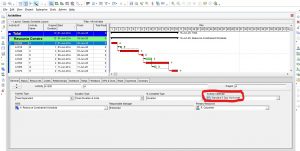- Overview
- How this epidemic impacts the projects?
- Tips to make sure to best utilize project resources.
- Conclusion
Overview:
It’s clear to all that the COVID-19 epidemic has created a huge storm of crises across the world and put most of the world’s cities and towns on lockdown, making construction projects sink in a sea of delays. Are you ready for the new approach to work during and after the epidemic is over?
Subsequently, most governments worldwide began to take a different approach to resume working in their essential projects that would benefit the community while maintaining the rules and social distancing guidelines issued by each state about Covid-19, to protect workers from infection. So, how will you resume working on your project schedule after these decisions’ significant impacts on both cost and schedule as work has been suspended?
We will try to see out the tips that help in achieving smooth resuming work in the project towards gradually increased productivity. And before we do that, let’s see examples of direct and indirect impacts caused by this epidemic.
How this epidemic impacts the projects?
Any project depends on resources that include “labor, Materials and Equipment”, as a result of the world lock project procurement activities and supply chains are disrupted, shipping and delivery of long-lead items or even local supplements are frozen, and movement of project labor and supervision team became limited and very restricted either locally or globally, currency fluctuations as a result of economic depression, delay of project execution work which impacts negatively on the project cash flow and Last but not least the new additional anticipated costs to maintain protection to project labor and supervision team from the epidemic. Now, let us see tips that help in the mitigation of these impacts that affected your project schedule definitely.
Tips to make sure the best utilization of project resources and mitigate the epidemic impacts towards gradually increased productivity:
Review your project contract; it is time to know your contractual obligations and rights in these circumstances, as this will draw the plan that your project will follow regarding project financing and time frame
Keep the records; as these records are your evidence for the force majeure to prove how this epidemic impacted your project cost and schedule so that you can submit claims for additional time and cost to recover the delays and that needs from your side, identification of what happened in your project before and after the epidemic.
Calculate the disrupted days; use any approach that fits your project and the used project management software.
For example, in Primavera “P6”, there will be a calendar attached to each activity in your current schedule. This calendar will most likely have a standard work calendar let us say (eight hours of work five days a week) which will drive the duration of each activity on the schedule. Then where work has completely stopped, set your activity calendar to a “Zero hrs” nonworking day system, which you can apply for the duration of the nonworking stoppage. Adjusting your scheduled activity hours will help you control each activity duration commensurate with your available resources and choose the calendar pattern that suits each activity.


Classify Activities; sure, not all of the project activities were executed during the epidemic. Therefore, you can use a specific schedule activity code named “Essential Work during the COVID-19 Impact” for clear and easy monitoring and controlling. And that absolutely will help you in comparing your schedule baseline and the current status of the project as well as determining the variations exactly.
Progress and re-evaluate the remaining scheduled activities; to reflect the current project performance. As the project progress is updated, you should prepare a complete report that clearly states how your project is impacted, provides all evidence, and re-evaluates the remaining project work according to the new rules, applying social distancing precautions as well as the available resources.
Notice to the Client; after assessing all impacts and the evaluation of your project status. You should notify your client with your intention to submit an extension of time claim and if your contract allows apply for cost compensation. Consequently, you get approval for your revised schedule which became more realistic than before.
Conclusion:
Notwithstanding the above, schedules are usually subject to changes due to force majeure events, which are not something new in the construction industry. However, these epidemic circumstances are unique; there is no blanket or predefined road map to follow exactly. Implementing best practices of project management can help mitigate the epidemic effects and achieve project deliverables with the minimum losses.
Contact us today to hire a CPM Scheduling expert.





